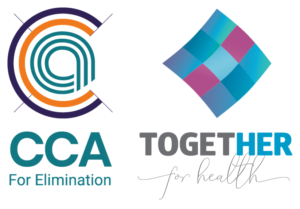 January is Cervical Cancer Awareness Month, a time to reflect on the impact cervical cancer has on women, families, and communities around the world.
January is Cervical Cancer Awareness Month, a time to reflect on the impact cervical cancer has on women, families, and communities around the world.
Our organizations – Cervical Cancer Action for Elimination and TogetHER for Health – are committed to driving awareness of the lives affected by this preventable disease, and the opportunities to change those stories.
In 2020, the World Health Organization (WHO) outlined a plan to eliminate cervical cancer. This is an unprecedented opportunity: the first-ever chance to globally eliminate a cancer. To put all countries on the path towards elimination, the following targets have been set for 2030:
- Vaccinating 90% of girls against cervical cancer-causing strains of human papillomavirus (HPV) by 15 years of age, vaccines which have been proven to reduce incidence of cervical cancer by nearly 90%;
- Screening 70% of women at ages 35 and 45 for precancerous cervical lesions, an intervention that can result in an 80% reduction in cervical cancer mortality; and
- Treating 90% of those women identified with cervical disease, including 90% of women with pre-cancer and 90% of women with invasive cancer.